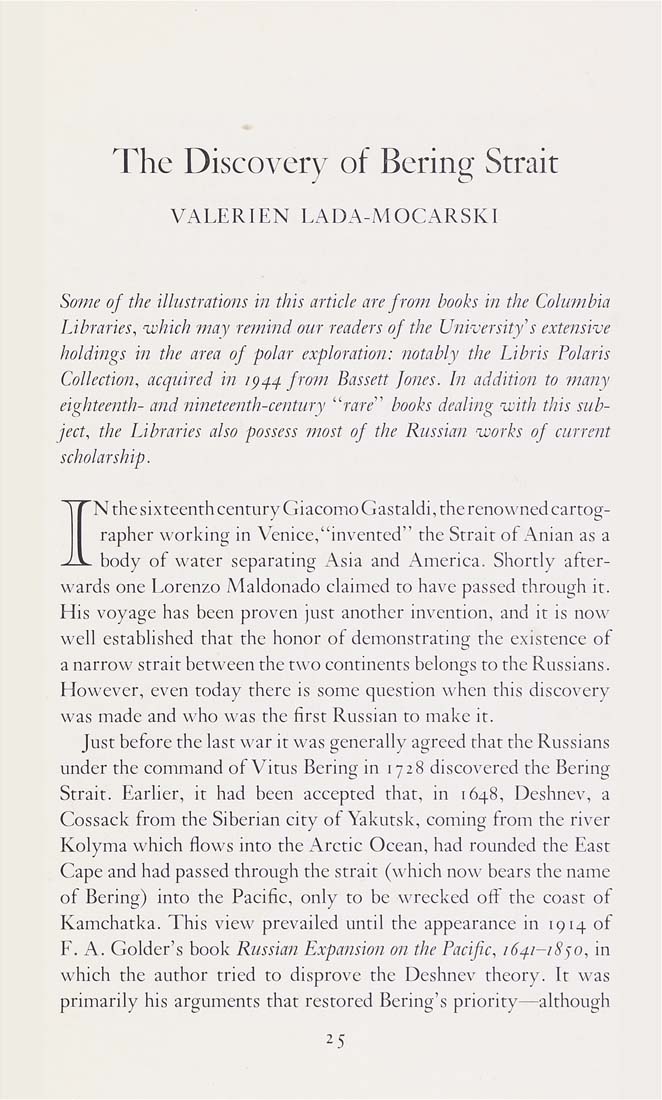Columbia Library columns (v.7(1957Nov-1958May))
(New York : Friends of the Columbia Libraries. )
|
||
|
|
|
|
| v.7,no.1(1957:Nov): Page 25 |

The Discovery of Bering Strait VALERIEN LADA-MOCARSKI Some of the illustrations in this article are from books in the Columbia Libraries, which may remind our readers of the University's extensive holdings in the area of polar exploration: notably the Libris Polaris Collection, acquired in ip^.^ from Bassett Jones. In addition to many eighteenth- and nineteenth-century "rare" books dealing with this sub¬ ject, the Libraries also possess most of the Russian works of current scholarship. IN the sixteenth century Giacomo Gastaldi, the renowned cartog¬ rapher working in Venice,"invented" the Strait of Anian as a body of water separating Asia and America. Shortly after¬ wards one Lorenzo Maldonado claimed to have passed through it. His voyage has been proven just another invention, and it is now well established that the honor of demonstrating the existence of a narrow strait between the two continents belongs to the Russians. However, even today there is some question when this discovery was made and who was the first Russian to make it. Just before the last war it was generally agreed that the Russians under the command of Vitus Bering in 1728 discovered the Bering Strait. Earlier, it had been accepted that, in 1648, Deshnev, a Cossack from the Siberian city of Yakutsk, coming from the river Kolyma which flows into the Arctic Ocean, had rounded the East Cape and had passed through the strait (which now bears the name of Bering) into the Pacific, only to be w recked oft' the coast of Kamchatka. This view prevailed until the appearance in 1914 of F. A. Goldcr's book Russian Expansion an the Pacific, 16^1-18^0, in which the author tried to disprove the Deshnev theory. It was primarily his arguments that restored Bering's priority—although 25 |
| v.7,no.1(1957:Nov): Page 25 |







